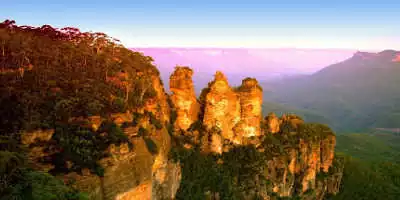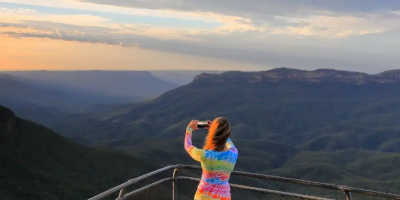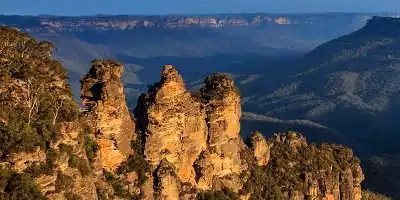
Aboriginal Rock Engravings at the Blue Mountains
Written by: Cameron Ward
Published: 11/23/2017
Reading time: 3 mins
Discover the Ancient Rock Art in Australia’s Blue Mountains!
The Blue Mountains provides a perfect snapshot into the Australian wilderness. The natural beauty is in full bloom, with lush greenery and velvet peaks that dip and soar across the horizon. The region is swarming with a vibrant display of Australian native wildlife.
But one of the greatest wonders of the region is home to the rich and lengthy Aboriginal history of the Blue Mountains.
Throughout the landscape, there are numerous Indigenous sites that formed an important part of life for the local tribes. Today, these sites provide an insight into the area’s history, as they are still flecked with centuries-old artefacts. One of the best to see still within the natural landscape is the rock paintings and rock engravings. The rich Aboriginal history is well worth exploring if you’re in the region, and there are plenty of tours and guides who can show you around. Visit the numerous art sites, burial sites, caves, and shelters throughout the bushland!
The Rock Engravings in the Blue Mountains
There is an incredibly array of well-preserved rock paintings still found in the Blue Mountains.
Back before Europeans invaded the Blue Mountains, the local residents were the Indigenous communities; named the Gundungurra, Darug, and the Burra Burra tribes. The history of these people within the Blue Mountains stretches back tens of thousands of years, with each community owning a diverse range of traditions, beliefs, and behaviours. One of the best ways to take a look into these ancient societies is through the rock engravings left behind. They are etched onto a flat, tree-less ledge date back between 5,000 and 7,000 years. They were created by pecking, hammering, or scraping to form shapes that resemble animals, tools, people, and the surrounding landscape. Australia is home to the world’s oldest collections of rock art, and interpreting these ancient artworks provides a better understanding of the earth’s ancient history.
Many of the works were made of the native animals. As well as serpents and wallabies, there are plenty of carvings of emus and fish. The sandstone that the pieces are carved into is Sydney sandstone, which is a particular type of rock which is easy to engrave but fades quickly. This meant that the Gundungurra people who resided in the area would have come back a few times each year to re-engrave their artworks.
But it’s not just wildlife that adorns the rock faces. Some of the carved patterns represent the Milky Way and might have been used as an astrological guide. These spots would also have been popular meeting places for Aboriginal ceremonies and corroborees.
The best way to see Aboriginal rock paintings is in the natural environment, rather than in a museum or gallery, as these are their most authentic setting. Each carving signifies something different, too, for example certain stencils would have acted as messages to let other members of the tribe know that the cave or ledge it is carved on is a safe place to stay.
Related article: Aboriginal History in the Blue Mountains








